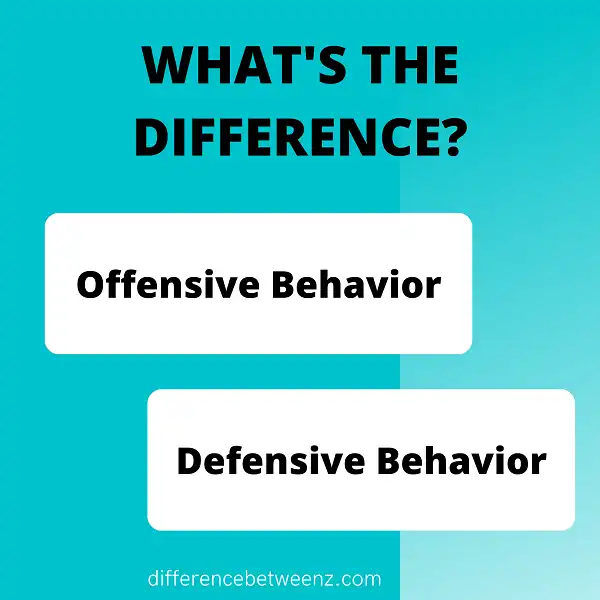There are two main types of behavior that can be displayed in any given situation- offensive and defensive. While the two terms are often used interchangeably, they actually have very different meanings. Offensive behavior is defined as any action or comment made with the intention of hurting or humiliating someone else. Defensive behavior, on the other hand, is characterized by a need to protect oneself emotionally or physically from attack. In most cases, defensive behavior is not intended to harm others, but instead to shield oneself from potential hurt or harm. Understanding the difference between offensive and defensive behavior can be critical in managing difficult situations and interactions both at work and at home.
What is Offensive Behavior?
Offensive behavior is any behavior that is intended to harm or frighten another person. It can take many forms, ranging from verbal abuse to physical violence. Offensive behavior is often motivated by hatred or bigotry, and it can have a profound impact on its victims. In some cases, offensive behavior may even lead to Post-traumatic stress Disorder (PTSD). While Offensive behavior is always unacceptable, it is important to remember that its victims are not to blame. Everyone has the right to live free from fear and violence. If you or someone you know has been the victim of Offensive behavior, it is important to seek help from a qualified professional. Only with the support of others can we hope to put an end to this type of destructive behavior.
What is Defensive Behavior?
Defensive behavior is any action taken in response to a perceived threat. It can be either passive or active. Passive defensive behaviors are those that involve no direct confrontation, such as hiding or fleeing. Active defensive behaviors, on the other hand, involve some form of physical or verbal aggression, such as fighting or yelling. Defensive behaviors are often instinctive and occur in response to real or perceived threats. They are a means of self-protection that aim to reduce the chances of being hurt or killed. Defensive behaviors are found in all animal species, including humans.
Difference between Offensive and Defensive Behavior
Offensive and defensive behavior both serve the purpose of protecting an individual, however they differ in how they are enacted. Offensive behavior is proactive and usually involves some form of aggression or violence. It is typically a response to perceiving a threat. Defensive behavior, on the other hand, is more passive. It often involves retreating or hiding from a perceived threat. While defensive behavior does not always require physical action, it can sometimes involve using words or body language to defend oneself. In general, offensive behavior is more likely to result in conflict, while defensive behavior is more likely to avoid it.
Conclusion
The difference between offensive and defensive behavior is important to understand in order to create the most effective sales strategy. Offensive behavior, while often successful in the short term, can alienate customers and lead to long-term loss of business. Defensive behavior may not be as flashy, but it builds trust with customers and creates a lasting relationship that can result in more sales over time,


